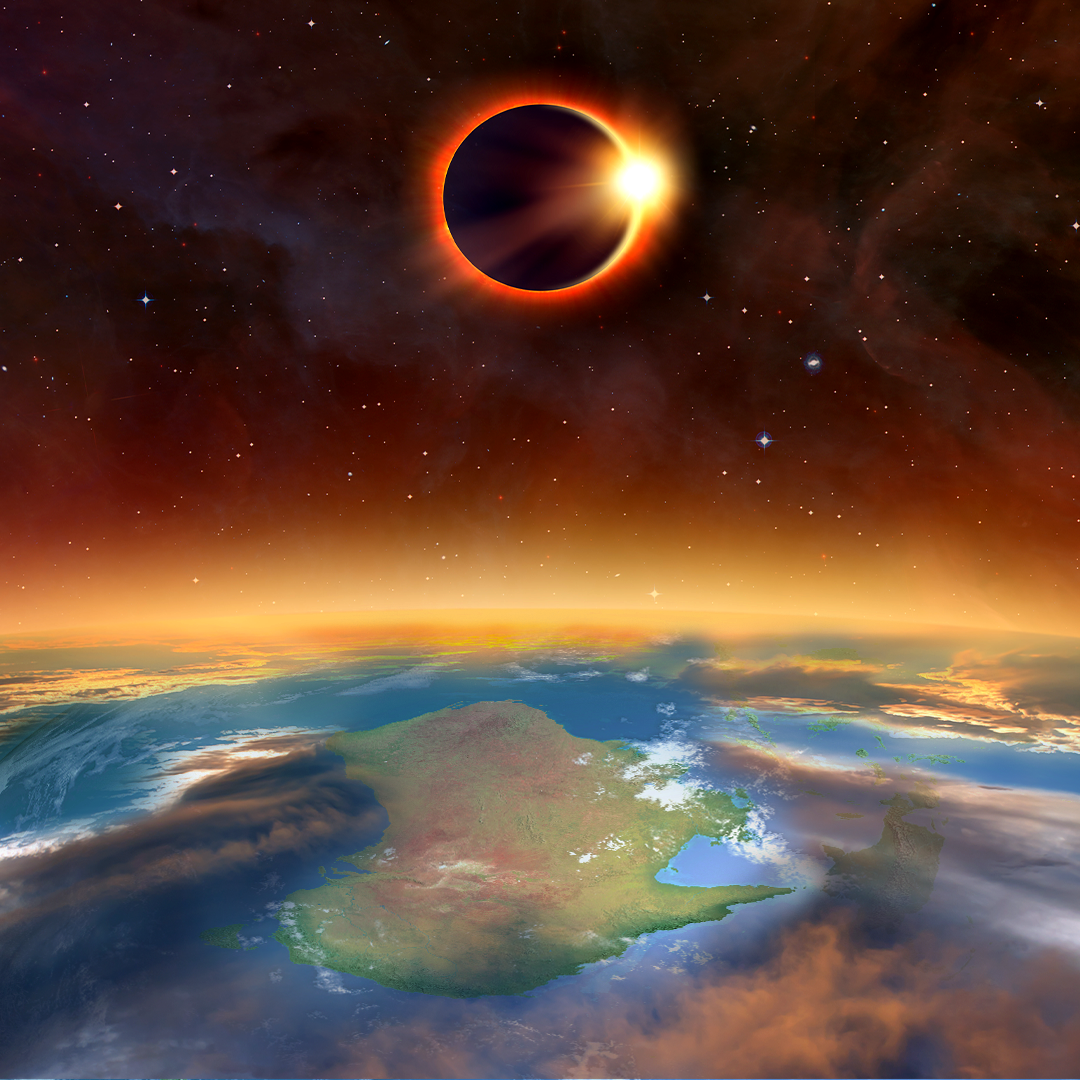
Why Aussie 'Ningaloo Eclipse' Is a Once in a 57 Year Event.
Share
From underwhelming meteor showers to barely-there green comets, not all astronomical events deliver on expectations. But this eclipse will be in a league of its own according to one astronomer, who describes it as:
“terrifying … [a] jet-black hole surrounded by this ghostly white corona.” And the next one’s not until 2043.
On April 20, 2023, a rare and spectacular celestial event will be visible across Australia: a total solar eclipse. A total solar eclipse happens when the moon passes directly between the sun and Earth, blocking out the sun’s light and casting a shadow on Earth’s surface. This shadow is known as the “umbra”, and the area beneath the shadow, where the total eclipse can be seen, is called the “path of totality”.
But what’s more, the Ningaloo Eclipse is a Hybrid solar eclipse, an extremely rare event with only 3.1% of solar eclipses in the 21st century being hybrid. A hybrid eclipse has portions of its path near sunrise and sunset as annular.
The path of totality for the 2023 total solar eclipse will begin in Western Australia, near the town of Exmouth, and travel across the north of the country, where it will be at its most impressive. The path will be about 140 kilometres wide and last for just over three minutes at its maximum point.
For those lucky enough to be within the path of totality over in WA, the sky will darken, and the temperature will drop. Stars and planets will become visible, and the corona – the sun’s outer atmosphere – will appear as a glowing halo.
“You look up where the sun is – where life-giving heat is provided, which has always been there every day of your life – and suddenly there’s this jet-black hole surrounded by this ghostly white corona. It’s terrifying,” - astronomer Andrew Jacob, a curator at the Museum of Applied Arts and Sciences in Sydney.
For those south of Exmouth – i.e. the vast majority of Australians – things will be slightly less impressive.
“The rest of Australia will see a partial eclipse, like a bite taken out of the sun,” Jacob says. “The moon is moving gradually across the sun but for most of Australia it [won’t] cover the whole of the sun.”
While it might not be as spectacular for most major cities as it will be in far-north WA, an eclipse of this nature is still something pretty special to witness, and a good reminder of our place in the universe.
The eclipse will be visible in Perth from about 10am local time, Adelaide from 12:23pm, Melbourne from 1:15pm, Sydney from 1.36pm and Brisbane from 1.43pm, so make sure to head outside for your lunch break.
This is the first total solar eclipse to be visible from Australia since 2012, and it will be a rare opportunity for Australians to witness one of the most awe-inspiring natural phenomena that our solar system has to offer. The next opportunity won't come up until 2043.
Just remember: looking directly at the sun is a bad idea, even when it’s partially hidden behind the moon. Special eclipse glasses or filters must be used to view the eclipse safely.
But what makes April 20th’s Eclipse Different?

A solar eclipse occurs when the Moon passes between Earth and the Sun thereby totally or partly obscuring the image of the Sun for a viewer on Earth. A total solar eclipse occurs when the Moon's apparent diameter is larger than the Sun's, blocking all direct sunlight, turning day into darkness.
A hybrid solar eclipse is a rare type of solar eclipse that changes its appearance as the Moon's shadow moves across the earth's surface. Totality occurs in a narrow path across the surface of the Earth, with the partial solar eclipse visible over a surrounding region thousands of kilometres wide.
Hybrid solar eclipses are extremely rare with only 3.1% of solar eclipses in the 21st century, hybrid eclipses.
Totality for this eclipse will be visible in the North West Cape peninsula and Barrow Island in Western Australia, eastern parts of East Timor, as well as Damar Island and parts of the province of Papua in Indonesia. While totality is visible outside of Australia, it is considered inaccessible in these places to view the full extent of 100% totality.

And keep thrusting Australia into the deep unknown…
#Space_Aus




